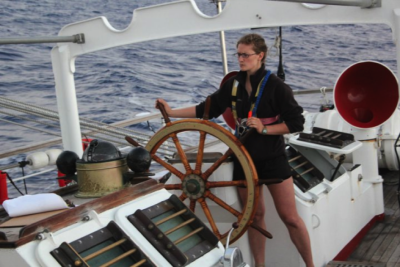
After five years of undergraduate and master’s oceanography classes and research at Stanford University, I was ready to set aside academia, and immerse myself in the processes of implementing marine research into useful ocean policies. The California State Sea Grant Fellowship Program provides the unique opportunity to work with one (or several!) state marine-related agencies, and the perfect bridge from university academics to working life.
During my fellowship, I will be working with the west coast regional Integrated Ocean Observing Systems (IOOS) and the West Coast Governors Alliance on Ocean Health (WCGA). My projects entails tying the oceanographic data collected by the three OOS Regional Associations (NANOOS, CeNCOOS and SCCOOS) into globally-relevant issues of marine debris and ocean acidification. Countless land-based debris washes into the oceans and is scattered by currents, and shellfish industries suffer from increasingly acidic upwelled waters, so marine debris and ocean acidification are growing concerns along the U.S. West Coast. State, local and nonprofit agencies have been working together to reduce these ongoing issues, but they are realizing the importance of better understanding how ocean processes affect marine debris and ocean acidification.
The OOS Regional Associations collect and compile oceanographic data parameters, including surface currents, wind data, and physical and biological measurements collected via moorings, cruise tracks and autonomous gliders. I am working with managers to highlight oceanographic needs, and to map and connect these ocean data parameters.
On the marine debris front, I am working with the WCGA Marine Debris Action Coordination Team to determine how ocean parameters affect debris movements. We hope to eventually correlate debris movements with oceanographic and freshwater flows, to determine land-based debris sources and create forecasts of marine debris beach landings. These efforts will allow managers to more effectively plan beach cleanups, and to reduce land-based debris.
My work with ocean acidification (OA) has involved re-assessing the Ocean Acidification Assets Inventory, compiled by the west coast OOS RAs in August 2012, which maps all west coast OA monitoring methods. I am also beginning to assess the oceanographic data needs of OA managers, so that I can provide them with access to data to help inform their decisions.
I am thrilled to begin both of these projects, and look forward to developing further connections with stakeholders within the west coast marine communities!
Written by Laura Lilly
A version of this article first appeared on The West Coast Governors Alliance on Ocean Health blog in January 2014.